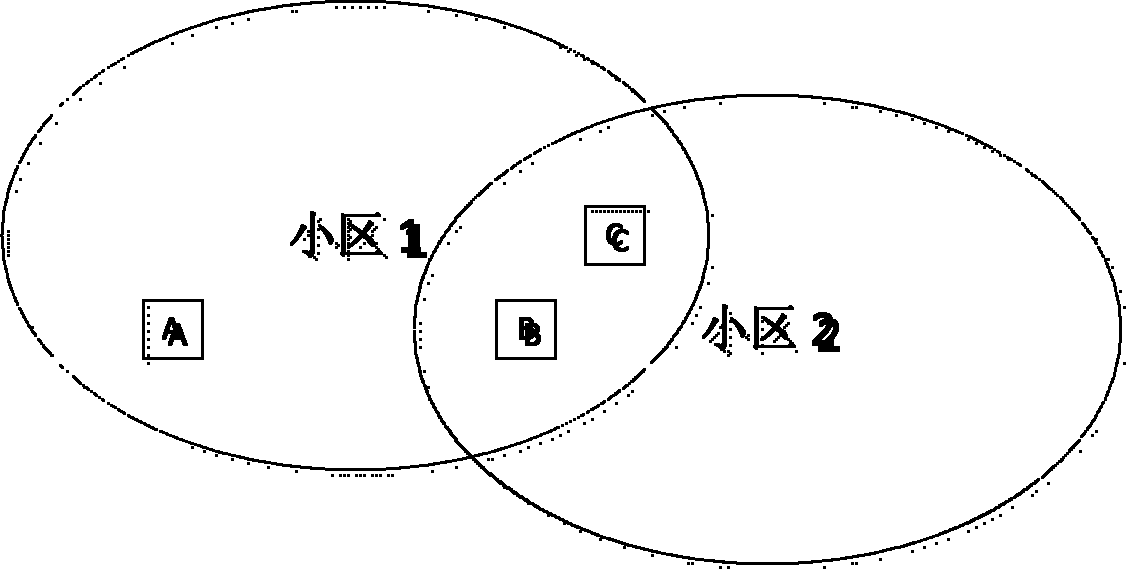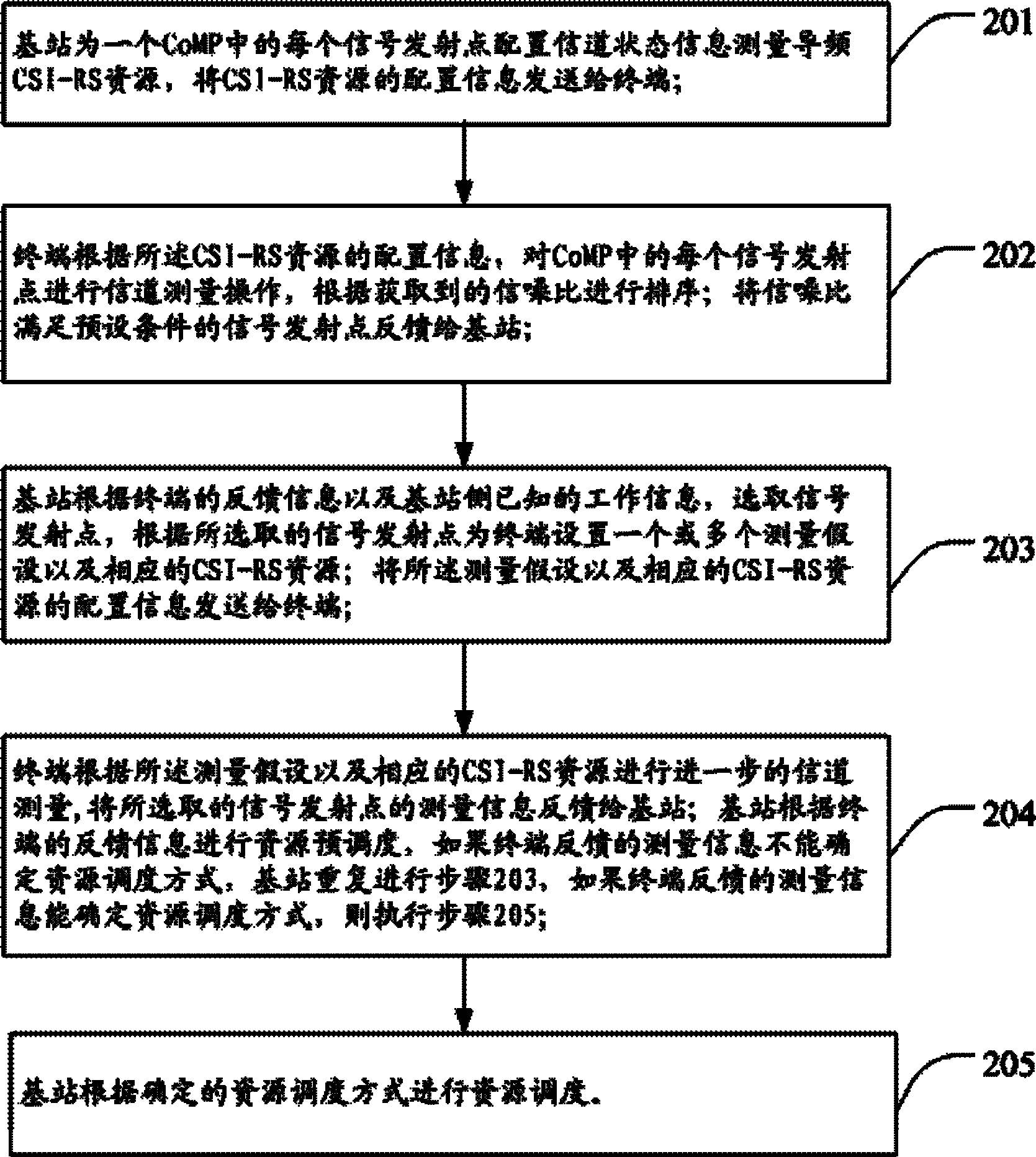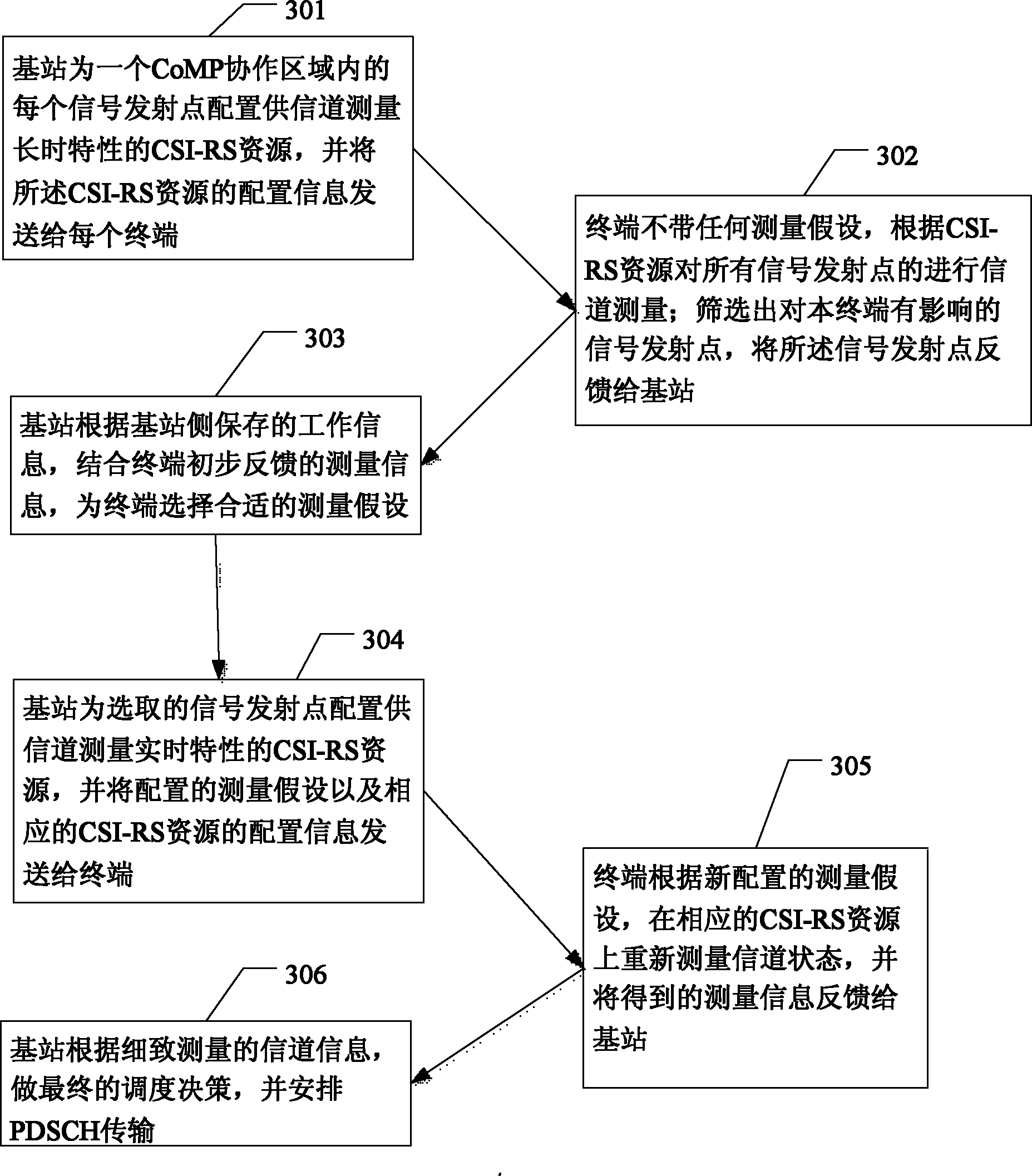LTE channel measurement and feedback method
A technology for channel measurement and measurement information, applied in the field of LTE channel measurement and feedback, can solve the problem of large amount of calculation of the terminal, and achieve the effect of reducing the amount of calculation, the workload of calculation, and the requirements.
- Summary
- Abstract
- Description
- Claims
- Application Information
AI Technical Summary
Problems solved by technology
Method used
Image
Examples
Embodiment Construction
[0058] In order to make the object, technical solution and advantages of the present invention clearer, the implementation manner of the present invention will be further described in detail below in conjunction with the accompanying drawings.
[0059] figure 2 It is a flow chart of a LTE channel measurement and feedback method in the present invention, such as figure 2 as shown,
[0060] Step 201: Step 1: The base station configures channel state information measurement pilot CSI-RS resources for each signal transmission point in a CoMP, and sends the configuration information of the CSI-RS resources to the terminal;
[0061] Step 202: According to the configuration information of the CSI-RS resource, the terminal performs a channel measurement operation on each signal transmission point in the CoMP, sorts according to the obtained signal-to-noise ratio; transmits the signal whose signal-to-noise ratio meets the preset condition point feedback to the base station;
[006...
PUM
 Login to View More
Login to View More Abstract
Description
Claims
Application Information
 Login to View More
Login to View More - R&D
- Intellectual Property
- Life Sciences
- Materials
- Tech Scout
- Unparalleled Data Quality
- Higher Quality Content
- 60% Fewer Hallucinations
Browse by: Latest US Patents, China's latest patents, Technical Efficacy Thesaurus, Application Domain, Technology Topic, Popular Technical Reports.
© 2025 PatSnap. All rights reserved.Legal|Privacy policy|Modern Slavery Act Transparency Statement|Sitemap|About US| Contact US: help@patsnap.com



